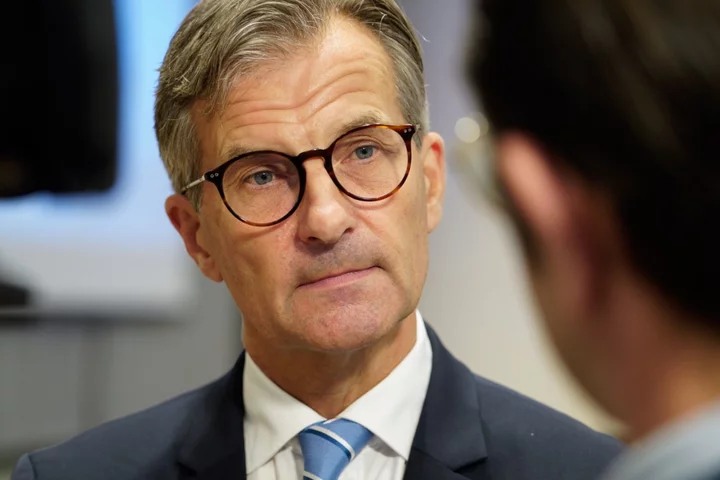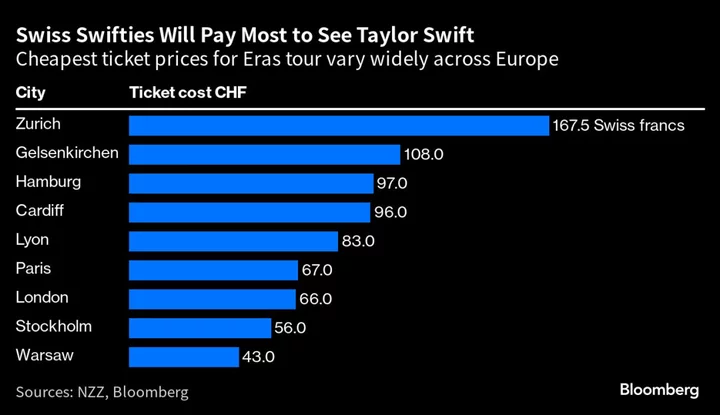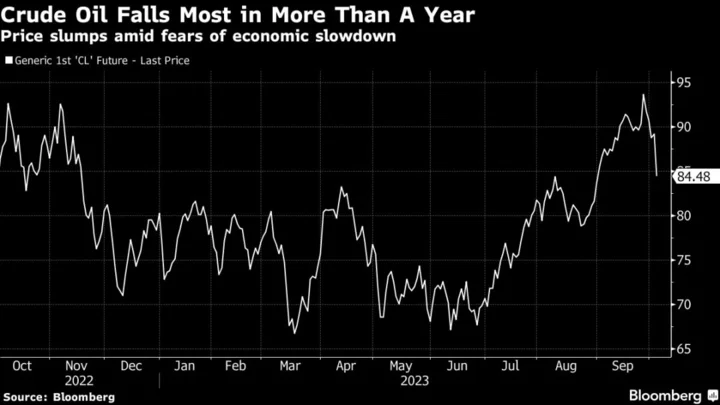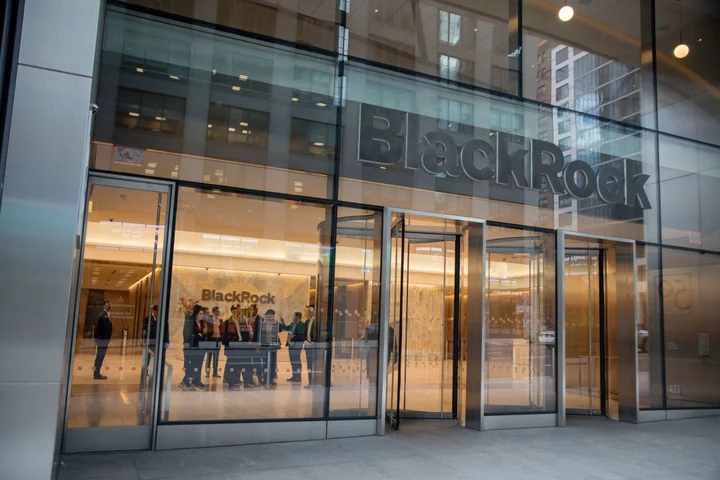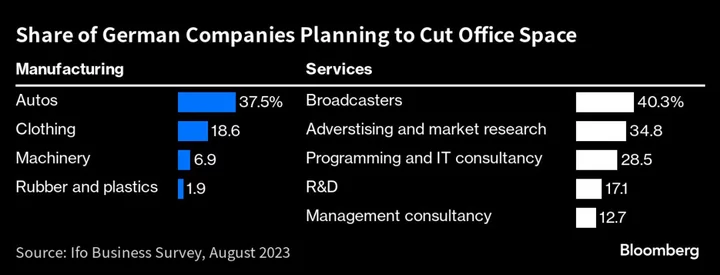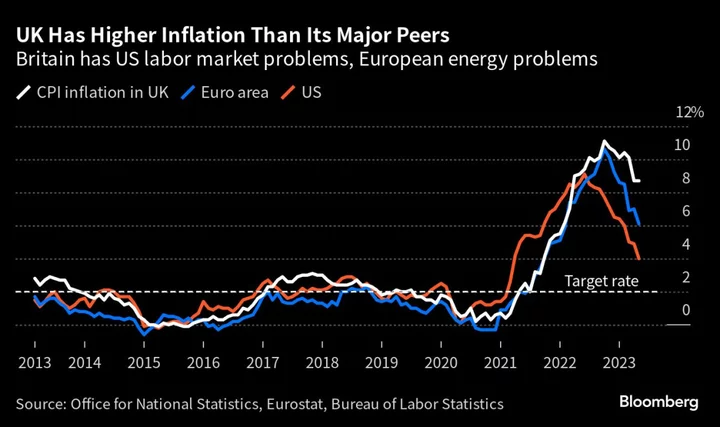Sweden’s Riksbank raised borrowing costs by a quarter point and signaled an intensified response to stubborn inflation that will further constrict the enfeebled economy.
In a decision that brings its key interest rate to 4%, the central bank also revealed that it will sell about a quarter of its currency reserves, offloading $8 billion and €2 billion ($2.1 billion) for Swedish kronor to guard against losses in case the Nordic currency appreciates.
The krona jumped as much as 0.9% after the central bank hedge announcement, but later reversed gains to edge back toward a record low reached earlier this week.
The central bank’s eighth consecutive increase was in line with the estimate of all but one of 18 economists surveyed by Bloomberg. Hamstrung by a weak krona, officials led by Governor Erik Thedeen said inflation pressures are still too high, according to a statement on Thursday that showed willingness to act again but didn’t signal certainty on another move.
“The Riksbank hikes by 25 basis points but with a dovish rate path which peaks at 4.10%,” Swedbank AB Chief Economist Mattias Persson said in a post on X, the platform formerly known as Twitter.
The decision sets the stage for Sweden to align with peers whose tightening shows signs of tapering off as central banks shifts toward the “higher for longer” stance reiterated on Wednesday by the US Federal Reserve.
It signals that a campaign of rate hikes that began in April 2022 could relent, with officials open to tempering their reaction to inflation that has previously proved sticky enough for them to risk further constriction on a struggling economy.
The prevalence of variable rates in Sweden means a lot of the impact has already been transmitted to households and businesses, putting a drag on output. Riksbank is now projecting two years of contraction for the biggest Nordic economy, first by 0.8% this year on a non-calendar-adjusted basis, and by 0.1% next year. That call chimes with some other forecasters.
While Riksbank rate hikes and the cost-of-living crisis have dented consumption, higher borrowing costs have also slowed activity in Sweden’s real estate market. House prices have stabilized in recent months, but commercial landlords are increasingly squeezed and the construction industry is suffering.
Read More: Sweden Bets It Can Isolate Real Estate Risks to Troubled SBB
Real estate worries have contributed to pushing the Swedish krona to record lows against the euro, complicating the Riksbank’s task through feeding imported inflation.
The currency hedging announced by the Swedish central bank amounts to about a quarter of its reserves and “is aimed at limiting the Riksbank’s losses if the krona appreciates,” officials said. The measure “does not have a monetary policy purpose,” they said.
Still, the move — first flagged as a possibility in June — has been seen as covert currency intervention since it could buoy the krona. The sales are set to start Sept. 25 and last from four to six months.
Providing comfort for the central bank, Sweden’s core inflation rate declined to 7.2% in August in a bigger-than-expected drop. That might have set the stage for officials to consider when to wrap up their hiking campaign.
Going into the decision, economists were divided on what path the bank will choose after Thursday’s move, with some banks expecting the hike to be the last one, while others, such as Swedbank, were penciling in another increase in November.
“As expected, the policy rate was raised today by 0.25 percentage points to 4.0%. Even if the door is kept open for another increase, we believe that the Riksbank is now at the final station,” said Alexandra Straberg, chief economist at Lansforsakringar AB.
--With assistance from Aline Oyamada, Ott Ummelas, Harumi Ichikura, Joel Rinneby, Thomas Hall, Love Liman, Anton Wilen and Constantine Courcoulas.
(Updates with details on currency sales throughout)

